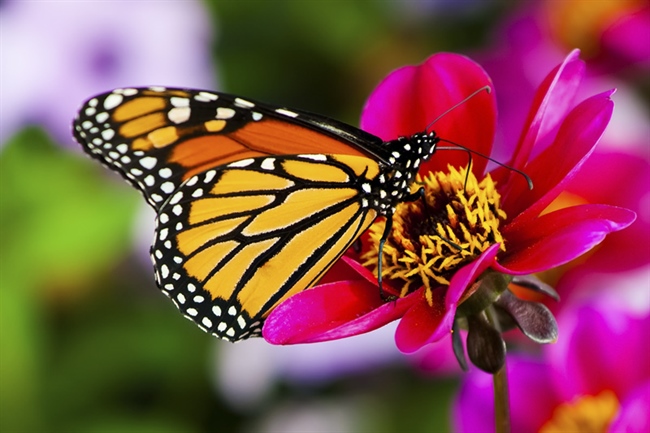Butterflies and moths; World's most wondrous animals
World's
most wondrous animals are butterflies and moths. Their beauty, seemingly miraculous metamorphosis,
and apparently carefree flight all spark our imaginations.Butterflies and moths are found on
every major land mass on Earth.


Butterflies have large, often
brightly coloured wings, and conspicuous, fluttering flight Butterflies comprise the true butterflies (superfamily Papilionoidea), the skippers (superfamily Hesperioidea) and the moth-butterflies (superfamily Hedyloidea). All the many other families within the Lepidoptera are referred to as moths. The earliest known butterfly fossils date to the mid Eocene epoch, 40–50 million years ago


Butterflies exhibit polymorphism, mimicry and aposematism. Some, like the Monarch, will migrate over long distances. Some butterflies have evolved symbiotic and parasitic relationships with social insects such as ants. Some species are pests because in their larval stages they can damage domestic crops or trees; however, some species are agents of pollination of some plants, and caterpillars of a few butterflies (e.g., Harvesters) eat harmful insects. Culturally, butterflies are a popular motif in the visual and literary arts.
The name is derived from Middle English buterflie, butturflye, boterflye, from Old English butorflēoge, buttorflēoge, buterflēoge, perhaps a compound of butor (beater), mutation of bēatan (to beat), and flēoge (fly).
Butterflies in their adult stage can live from a week to nearly a year depending on the species. Many species have long larval life stages while others can remain dormant in their pupal or egg stages and thereby survive winter
| Scientific classification | |
|---|---|
| Kingdom: | Animalia |
| Phylum: | Arthropoda |
| Class: | Insecta |
| Order: | Lepidoptera |
| Suborder: | Rhopalocera |
Subgroups
- Superfamily Hedyloidea:
- Hedylidae
- Superfamily Hesperioidea:
- Hesperiidae
- Superfamily Papilionoidea:
- Papilionidae
- Pieridae
- Nymphalidae
- Lycaenidae
- Riodinidae
Polymorphism
Main article: Polymorphism (biology)
Many adult butterflies exhibit polymorphism, showing differences in
appearance. These variations include geographic variants and seasonal
forms. In addition many species have females in multiple forms, often
with mimetic forms. Sexual dimorphism in coloration and appearance is
widespread in butterflies. In addition many species show sexual dimorphism
in the patterns of ultraviolet reflectivity, while otherwise appearing
identical to the unaided human eye. Most of the butterflies have a sex-determination system that is represented as ZW with females being the heterogametic sex (ZW) and males homogametic (ZZ)
Life cycle |
The face of a Dryas iulia, more commonly known as a Julia butterfly.
Butterflies in their adult stage can live from a week to nearly a
year depending on the species. Many species have long larval life stages
while others can remain dormant in their pupal or egg stages and thereby survive winters.
Butterflies may have one or more broods per year. The number of generations per year varies from temperate to tropical regions with tropical regions showing a trend towards multivoltinism.
A butterfly is a mainly day-flying insect of the order Lepidoptera, which includes the butterflies and moths. Like other holometabolous insects, the butterfly's life cycle consists of four parts: egg, larva, pupa and adult. Most species are diurnal.

Life Cycle of Butterflies and Moths
As advanced insects, butterflies and moths have a "complete"
life cycle. This means that there are four separate stages, each of
which looks completely different and serves a different purpose in the
life of the insect.











No comments:
Post a Comment